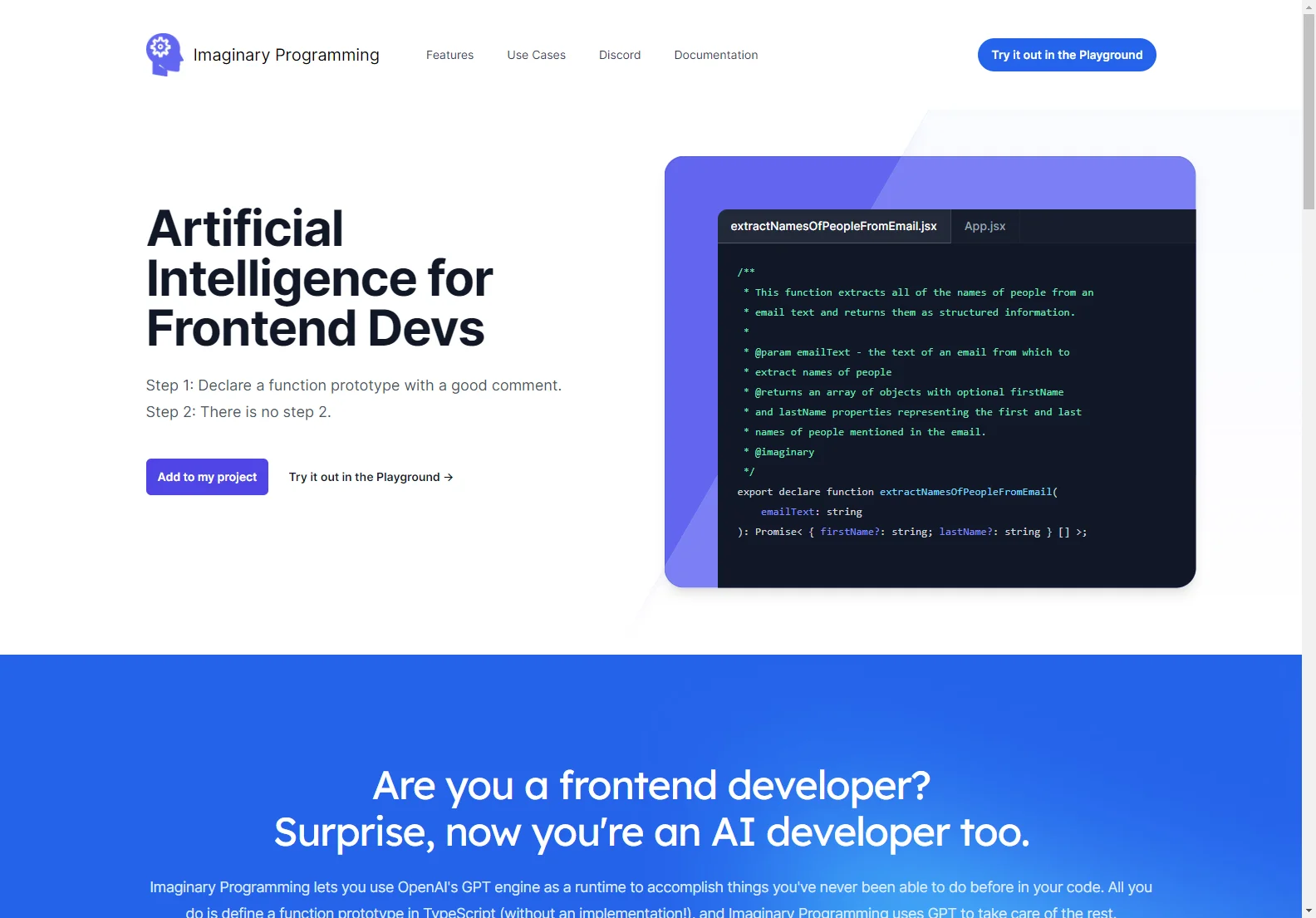Imaginary Programming: Revolutionizing Frontend Development with AI
Imaginary Programming is an innovative tool that has opened up new possibilities for frontend developers. It allows them to harness the power of OpenAI's GPT engine in a unique way.
Overview
Imaginary Programming simplifies the process of adding intelligence to your code. Instead of spending months training an AI model, you can simply define a function prototype in TypeScript (without an implementation). The tool then takes care of the rest using GPT. It's a great way to incrementally add intelligence to your existing node, next.js, and React projects.
Core Features
One of the key features is the ability to get structured data from GPT. Developers are used to working with structured data, and with Imaginary Programming, you can tell GPT the shape of the data you're looking for and receive an output in JSON. Another notable feature is the ability to use AI without having to rely on an ML team. You can tell the computer what to do in an Imaginary Function comment and see how far you can get on your own.
Basic Usage
To start using Imaginary Programming, first, you need to declare a function prototype with a good comment. For example, if you want to extract the names of people from an email text, you can define a function like extractNamesOfPeopleFromEmail which takes the email text as a parameter and returns an array of objects with optional firstName and lastName properties. Once you've defined the function prototype, Imaginary Programming uses GPT to handle the actual implementation.
Compared to other existing AI solutions like Github Co-Pilot which mainly helps in solving the same old problems faster, Imaginary Programming lets you tackle entirely new problems. Whether it's generating useful titles and text for your user, classifying data using human-like intelligence, or extracting structured data out of messy, unstructured language, Imaginary Programming has got you covered.
In conclusion, Imaginary Programming is a powerful tool that empowers frontend developers to do things they've never been able to do before in their code, making the development process more efficient and opening up new avenues for creativity.
